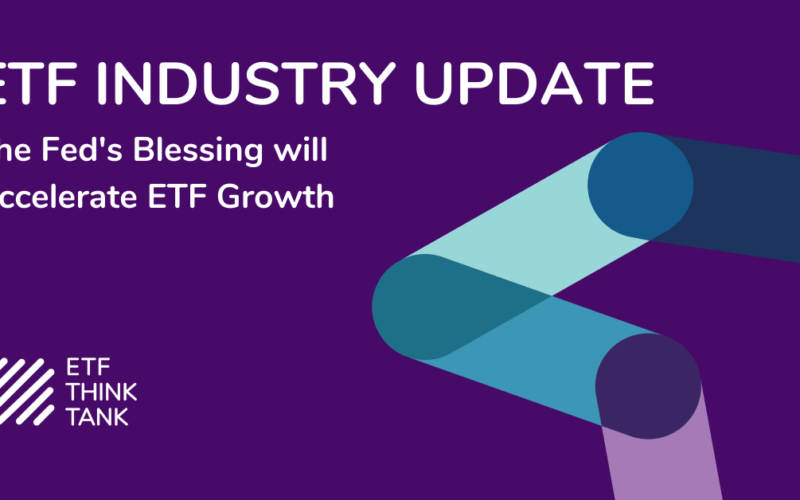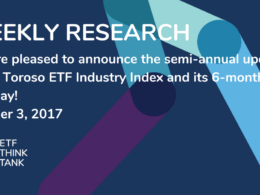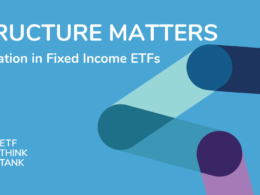These industries make up almost 15% of broader markets outside of the top 100 companies in the US. The Zombie reading on the S&P 500 is only 4.84% due to their large weighting compared to the top companies. Luckily, these industries don’t contribute greatly to the bottom line of markets, comprising only around 7% of S&P 500 earnings.
We recently wrote about how huge the world’s biggest companies actually seem when compared to the rest of the market. This year has only widened the gap. This difference does not lead to competitive markets, and QE only increases the discrepancy between companies who have limitless access to debt, and those who don’t.
Economic Instability Speeds up Innovation Adaption
In 1817, the lack of horses led to the invention of the first bicycle. In 1894, the Great Horse Manure Crisis, that left most major cities drowning in horse manure, sped up use of cars; 18 years later, horses were almost completely replaced by motor vehicles. As the masses flocked to the internet in response to the Chinese SARS epidemic, companies such as Alibaba saw a turning point in internet usage. For COVID-19, it appears to be video conferencing platforms, contactless payments, online education, 3-D printing, genomic sequencing and analysis, cloud storage, Ecommerce and more. The adoption of these technologies has significantly sped up during quarantine, but we expect these changes to define how we do business and communication in the future as well. PayPal was the first non-bank to gain approval to participate in the Paycheck Protection Program. Additionally, Square and PayPal’s Cash Apps can (without FDIC protection) offer those without bank accounts access to stimulus checks faster. COVID-19 is redefining what counts as a bank in the US. Independent professionals are seeing more traction than ever before, and online marketplaces for freelancers, like Fiverr and Upwork, are gaining more traffic. Businesses are now considering “germ scores” on transactions with consumers; they’ve found that credit cards are dirtier than cash, NYC Citi bikes, and McDonald’s bathrooms. In a world where specialization and optimization, for the sake of perpetual margin increase, drove stock prices for decades, innovation is now key.
Economic Signals to Watch
- Weak ↗ Yield Curve Inversion – no current inversion. the reversion of the 2yr/10yr treasury spread lines up well with QE in the fall. We do not think this is a great indicator in today’s QE driven bond market.
- Medium ↘ Credit Spreads – credit spreads have widened. Coming into this year, we warned about potential widening in this space, specifically in energy. Given recent events, and the state of the energy market, we are concerned here and will be watching this closely. A pickup of defaults would be a bad sign. As we outlined above, the timing, speed and magnitude of the return to ‘normal’ in our economy will be important here – default uptick would be a bad sign.
- Strong ↘ Consumption patterns – consumer sentiment has plummeted (graph below). The depths of this recession will determine how much this will affect consumers’ spending vs saving habits. For the first time since World War II, we’ve been asked to stay home and not consume convenience. Over this quarantine period we’ve found ourselves much less socially influenced in regards to consumption; this could have unforeseen effects on the great return of the US consumer.
- Medium → Political Uncertainty – (graph on next page)
- Medium ↘ QE – QE will be bountiful until it causes main street political pushback, and protests are hard in quarantine. The biggest difference between today and 2008 is the swiftness and magnitude of stimulus. This was done with little pushback from the public. As demonstrated by the public’s desire to let Lehman fall in 2008, zombie industries may be met by political resistance when they go back for seconds. Most would put an upward green arrow here, but we think the water hose may be met with pushback in the future..


Updated Market Expectations
- The market may very well make all-time highs & near-term lows in the coming 18 months. Which will come first remains unknown.
- Volatility will come in spikes, in both directions.
- Earnings for 2020 are irrelevant – it’s all about what the new normal will look like going forward
- Exceptionally volatile earnings periods in the upcoming quarters– companies are backing further and further away from providing guidance. This volatility could be in either direction.
- Market Disruptions speed up adoption of innovation – innovate or die.
- Broad zombie indexes will continue to underperform.
- Inflation with high unemployment and stagnant demand (StagFlation) is a real possibility for the second half of 2021.
- Oil will never go above $60 again.
- Global large-cap tech stock outperformance to continue – the world’s largest tech companies outperformed the world’s largest 100 companies by about 15%. The largest 100 companies outperformed broad global equities by about 10%, which outperformed global small caps by about 10%. Small caps have been cheap for years; this is about access to credit. No one benefits from QE as much as the largest companies in the world (graph below). Global internet of things (IOT) continued dominance because of innovation and unmatched access to capital.

What You Can Do About It
- Prepare your portfolio for extremes; seek positions that will do well in different market environments. Rebalance between growth, inflation, deflation and recession.
- Move away from broad indexes – in both equity and fixed income.
- Barbell risks in almost all asset classes.
Your rebalancing strategy is more important than ever. In the midst of COVID-19, many large, “passive” indexes had to actively decide to postpone rebalances right when the work-from-home shift began. Rebalancing based on portfolio drift is ideal, and in a volatile market with many potential swings, this strategy comes with benefits. How will dividend achievers’ indexes fair? Will low volatility surpass large-cap growth, even after all the outperformance? In the world of asset management, track record length is important. However, certain areas of the ETF marketplace are exempt from this general rule.
Have We Learned from Past Recessions?
Have we learned the dangers of misused leverage hidden in parts of the economy, and the ticking time bomb these create if growth/consumption don’t continue steadily upward? Has the fed learned lessons from the past and overcome market recessions (at least in duration), even if the economy will have its traditional cycles? The Federal Reserve certainly learned to act quicker; a and with magnitude, and as far as leverage, as we mentioned in our last commentary, leverage has just gotten more creative. From an allocator’s perspective, the most important message is that the Federal Reserve will do anything to protect markets.
US Equities

US equities are still expensive, yet still crucial for the global economy. While we admit earnings expectations going out 3 to 5 years from now is somewhat a game of darts, we are still near all-time highs and expect expectations to be overshot if anything. Outside of Microsoft, Amazon, Alphabet & Facebook, thematic ETFs provide the best access to growth. 30% of the Russell 3000 has negative earnings, and as we mentioned earlier, extreme QE only benefits the largest companies. Mid- and small-caps have significantly underperformed, and we don’t expect that to change. We see value in financials, and would stay away from energy. Be wary of older index structures that may not be relevant these days. Car companies, considered consumer discretionary, are no longer just exposed to the raw materials of cars and end sales; they are financing arm companies exposed to consumer credit. Similarly, tech companies are also finance companies, and financials are also technology companies.
| Broad: | Narrow: |
| •None | •Davis Select US (DUSA)
•ARK Innovation (ARKK) •ROBO Global Healthcare Tech & Innovation (HTEC) •SPDR S&P Kensho New Economies Composite (KOMP) •Vanguard Financials (VFH) •WisdomTree US Small Cap (EES) |
US Equities (cont.)
The shift in innovation adoption has caused many asset classes to appear less volatile than they actually are. This is why we think now is the most important time to review old index structures that may exist in your portfolio (think what this might do to some of the most basic low volatility indexes). While we believe many stocks have fared well in 2020 thus far, and will continue to do so, their volatility has been understated. Market disruptions lead them to potentially increase revenue growth in the coming 3-5 years, unlike most other industries. This is no clearer than in the emerging market space ,which we will touch on momentarily, and shouldn’t be a reason not to invest. In fact, we strongly recommend it in the emerging market space; we are just commenting on the subdued volatility some growth categories have experienced thus far.
International Developed Equities
Reiterating from our last commentary, it’s hard to get excited about a value play on Nestle. Although this is mostly a joke, it underlines two primary issues with international developed equities: lack of broader innovation, and lack of unity. Lack of unity provides reason to expect perpetual delay of the Fiscal and Monetary policy. The European Union just isn’t as strong and does not have the history that the United States has. We are most concerned about broad indexes in this space, and would instead recommend using active managers or thematic exposures.
Emerging Market Equities
Emerging market Internet of Things (IOT) outperformed broader emerging markets by over 14% this year; WisdomTree Emerging Markets ex-State-Owned Enterprises Fund (ex-SOE) outperformed broader EM by about 3%. In our last commentary, we predicted that within 5 years, either Tencent or Alibaba (possibly both) would approach the Trillionaire’s club, currently consisting of Microsoft, Apple, Google and Amazon. We’re not necessarily saying that they will be worth over a trillion (though they may), just that the gap between the Chinese tech giants and US tech giants would close. These companies do have the size to benefit from global QE, and similarly, our tech giants are using times of market disruption to ease into other industries.
| Broad: | Tech focused: |
| •Goldman Sachs ActiveBeta EM (GEM)
•WisdomTree EM ex-SOE (XSOE) |
•KraneShares CSI China Internet (KWEB)
•Emerging Markets Internet & Ecommerce (EMQQ) |
Fixed Income
The iShares Core US Aggregate Bond ETF (AGG) returned 3.06% for the quarter, while the iShares iBoxx $ High-Yield Corporate Bond ETF (HYG) returned -11.89%. Long term treasuries were up over 30%. But that doesn’t truly explain volatility increase in fixed income markets. The third week in March was met with more outflows in bond mutual funds and ETFs than ever experienced in history – even surpassing 2008. Overall, ETFs did exactly what they were designed to do, with a few bad actors due to structure issues. It’s clear the Federal Reserve will do everything in its power to keep bond markets moving smoothly. This stems from the fact that the Fed now buys corporate and high-yield bond ETFs, and supports municipal bonds. High-yield was dragged down by the energy sector, which we warned about in our last commentary, but spreads have widened in many industries of the high-yield space. default rates are still the key here. The length of the stay-at-home order and eventual return to semi-normalcy will dictate any significant changes in defaults.
| Diversifiers (pure duration): | Income Generators |
| •PIMCO 25+ Year Zero Coupon US Treasury (ZROZ) | •Saba Closed-End Funds ETF (CEFS)
•VanEck Vectors CEF Municipal Income ETF (XMPT) |
Alternatives


Source: Visualcapitalist.com
We have reached oil storage capacity. The Saudi-Russian trade war came right as the economy shut down and oil consumption crashed. Tankers are full – if you have room for it, someone may actually pay you to pick up oil in Oklahoma. We don’t think oil will ever trade above $60 again, leaving many oil exporting countries in trouble.
We continue to recommend a mixed alternative bucket consisting of long-term treasuries, gold, and AGFiQ US Market Neutral Anti-Beta Fund (BTAL). All 3 are up double digits this year. If you can access crypto, adding Bitcoin into this mix would also help , despite the complex execution. Bitcoin is up 24% YTD in response to massive global QE. This year, we were able to rebalance between our alternatives and equities at market dislocations mid March, which was very beneficial for YTD returns.
Conclusion
We continue to recommend a barbell approach to risks within asset classes (think equities and fixed income), and for the entire portfolio. The names below are definitely more volatile than traditional broad indexes, but we see more and more value in seeking the non-traditional in these markets.
A hypothetical high-active-share reconstruction of a traditional 60/40:
- 10% Cash
- 5% PIMCO 25+ Year Zero Coupon US Treasury Index ETF (ZROZ)
- 5% Saba Closed-End Funds ETF (CEFS)
- 10% AGFiQ US Market Neutral Anti-Beta (BTAL)
- 5% SPDR Gold Trust (GLD)
- 15% O’Shares Global Internet Giants (OGIG)
- 15% Davis Select Worldwide (DWLD)
- 10% ARK Innovation (ARKK)
- 7.5% Emerging Markets Internet & E-commerce (EMQQ)
- 7.5% SPDR Kensho New Economies (KOMP)
- 5% Robo Global Healthcare Technology (HTEC)
- 5% Vanguard Financials (VFH)
Investment Trends
- Work From Home movement
- Many companies will change their policy on 5-days a week for employees forever
- “Germ scores” and contactless payments
- Investing in Camels vs Unicorns (Camels can go fast, or go long without water)
- COVID-19 – acceptance of big brother digitally watching us?
- Eventual speed up to driverless cars
- Cheaper than owning, cleaner than public transportation
Final Thoughts on the Economy
We live in a consumer economy, and we are marketed as consumers everywhere we go. For the first time since World War II, we’ve been asked to stay at home and take care of ourselves, not live in the convenience economy. Even when the economy reopens, we do not think that US consumption will be back in full stride for a few years. Markets expect a full consumption recovery at some point in the next 18-24 months. Fiscal and Monetary policy will continually support the economy until that point. Any change in either would be bad for markets (if public pushes back on potential industry bailouts, etc).

Returns as of May 1, 2020. Index performance is for informational purposes only and does not represent any ETF. Indexes are unmanaged and one cannot invest directly in an index. Past performance is NOT indicative of future results, which can vary. |
















